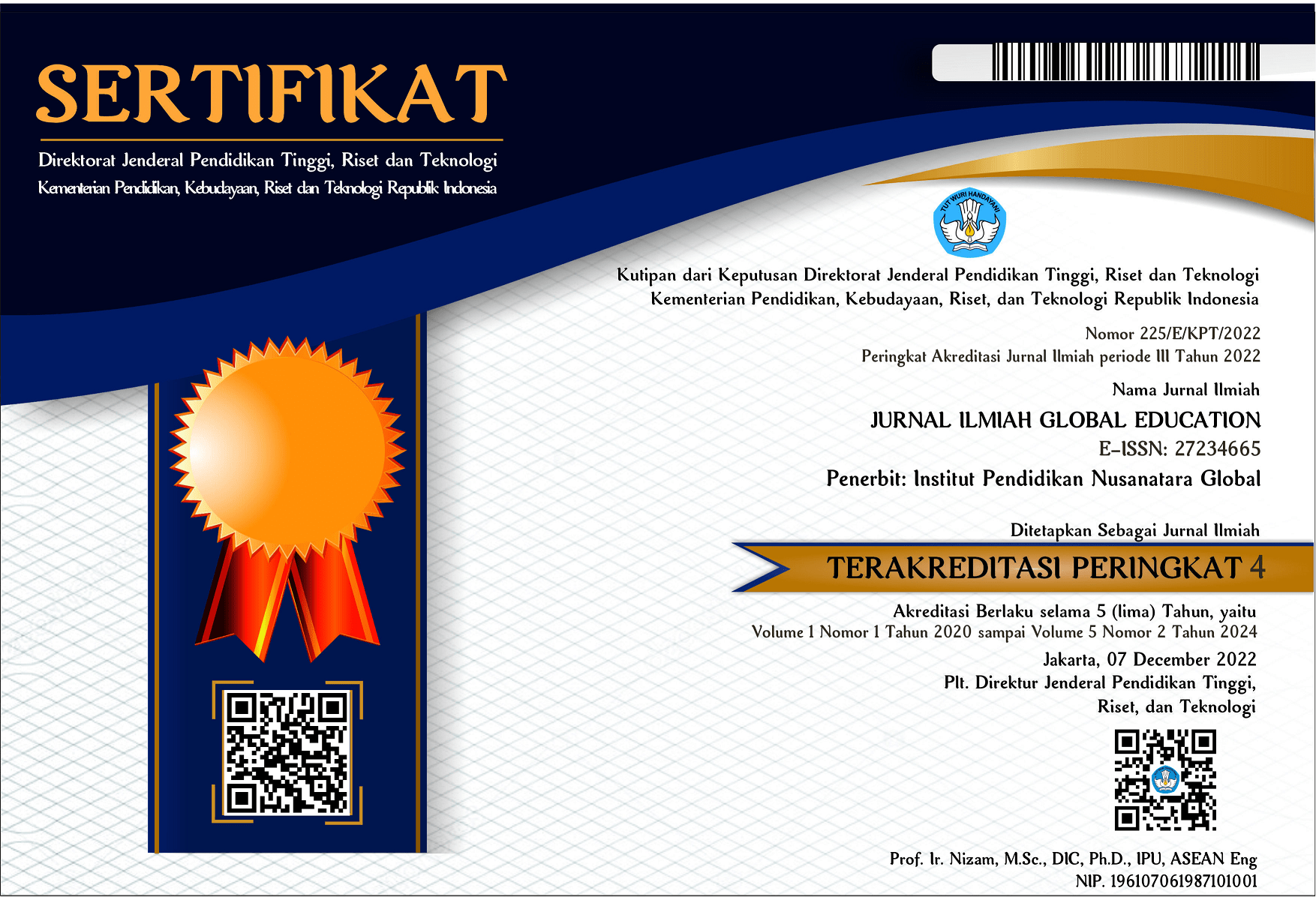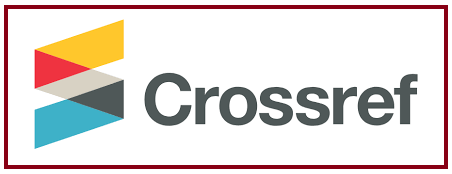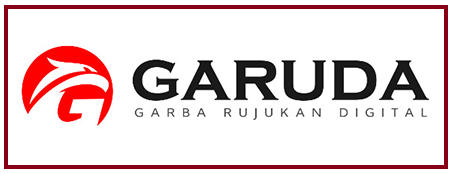Antecedents Word of Mouth Intention in the Restaurant Industry
DOI:
https://doi.org/10.55681/jige.v5i1.2185Keywords:
food quality, Personal interaction quality, physical environment quality, service encounter, word of mouth intentionAbstract
A restaurant is a place that provides good service to all its customers, both in the form of food and drinks. This research aims to investigate the antecedents word of mouth intention This research uses a quantitative approach with a survey method. with a sample size of 102 respondents. The data collection tool in this study used an online questionnaire which was distributed to respondents using a non-probability sampling approach using a purposive sampling technique with the criteria of using respondents who visited the restaurant at least once a year. Data analysis using PLS-SEM. The contribution of this research is to expand the factors that influence positive customer feelings towards restaurants such as environmental quality, food quality, service quality, and comfort. Service Encounter and Awareness as mediation to explain its influence on word-of-mouth intention. The results show that food quality, personal interaction quality, physical environment quality, perceived value, Service Encounter, and Awareness have a significant effect on word-of-mouth intention. This research implies that there is an influence between food quality, personal interaction quality, physical environment quality, and perceived value with word-of-mouth intention, so it can be concluded that food quality and interaction quality can shape customer relationships in providing positive recommendations about restaurants so that customers will visit. return to the restaurant.
Downloads
References
Afif, H. ’, Heri, B., Titis, P., & Dhewi, S. (2020). the Impact of E-Wom and Advertising on Purchase Decision Si.Se.Sa Syar’I Clothes With Brand Awareness As an Intervening Variables (a Study on Si.Se.Sa Fashion Consumers). International Journal of Business, Economics and Law, 23(1), 1. www.gbgindonesia.com
Akhtar, N., Siddiqi, U. I., Ahmad, W., Usman, M., Chen, X., & Islam, T. (2020). Effects of service encounter barriers on situational abnormality and consumers’ behavioral intentions at food and beverage restaurants. Asia Pacific Journal of Marketing and Logistics, 33(7), 1513–1534. https://doi.org/10.1108/APJML-03-2020-0192
Arif, M. E. (2019a). the Influence of Electronic Word of Mouth (Ewom), Brand Image, and Price on Re-Purchase Intention of Airline Customers. Jurnal Aplikasi Manajemen, 17(2), 345–356. https://doi.org/10.21776/ub.jam.2019.017.02.18
Arif, M. E. (2019b). the Influence of Electronic Word of Mouth (Ewom), Brand Image, and Price on Re-Purchase Intention of Airline Customers. Jurnal Aplikasi Manajemen, 17(2), 345–356. https://doi.org/10.21776/ub.jam.2019.017.02.18
Aziz, Y. A., & Awang, K. W. (2009). Conceptualising the Service Excellence and Its Antecedents: the Development of Structural Equation Model. Journal of Management and Business, 8(2), 126–137. https://doi.org/10.24123/jmb.v8i2.140
Baloglu, S., & McCleary, K. W. (1999). A model of destination image formation. Annals of Tourism Research, 26(4), 868–897. https://doi.org/10.1016/S0160-7383(99)00030-4
Berry, L. L., Wall, E. A., & Carbone, L. P. (2016). Managing Service Experience Clues. Academy of Management Perspectives, 20, 43–57.
Bitner, M. J. (1990). Evaluating the Service Encounter. In Journal of Marketing (Vol. 54, pp. 69–82).
Brytek-Matera, A., & Kozieł, A. (2015). The body self-awareness among women practicing fitness: A preliminary study. Polish Psychological Bulletin, 46(1), 104–111. https://doi.org/10.1515/ppb-2015-0014
Buttle, F. A. (1998). Word of mouth: Understanding and managing referral marketing. Journal of Strategic Marketing, 6(3), 241–254. https://doi.org/10.1080/096525498346658
Chen. (2010). How determinant attributes of service quality influence customer perceived value: an empirical investigation of the Australian coffee outlet industry”, International. Journal of Contemporary Hospitality Management, 22(44), 535–551.
Conger, S. (2012). Service quality: Status and research directions. In Handbook of Research on E-Business Standards and Protocols: Documents, Data and Advanced Web Technologies (Issue January 2012). https://doi.org/10.4018/978-1-4666-0146-8.ch025
DaMatta, F. M., Grandis, A., Arenque, B. C., & Buckeridge, M. S. (2010). Impacts of climate changes on crop physiology and food quality. Food Research International, 43(7), 1814–1823. https://doi.org/10.1016/j.foodres.2009.11.001
Dewi, E., Tarigan, S., Wijaya, M., & Marbun, P. (2020). The Influence of Lifestyle, Physical Environment, and Menu Variety on Customer Loyalty through Customer Satisfaction in the Coffee Shop. International Journal of Research and Review (Ijrrjournal.Com), 7(March), 3.
Dwiyanti, S. A. I., & Saifuddin, M. (2022). The Effect Of Relationship Marketing, Food Quality And Service Quality On Customer Satisfaction With Purchase Decisions As Intervening Variables. At-Tijaroh: Jurnal Ilmu Manajemen Dan Bisnis Islam, 8(1), 1–24. https://doi.org/10.24952/tijaroh.v8i1.4269
El-Said, O. A. (2020). Impact of online reviews on hotel booking intention: The moderating role of brand image, star category, and price. Tourism Management Perspectives, 33(November 2019), 100604. https://doi.org/10.1016/j.tmp.2019.100604
Hair, J. F., M., H. G. T., Ringle, C. M., & Sarstedt, M. (2022). A primer on partial least squares structural equation modeling (PLS-SEM). Sage
.Hanafi, Widyawati, R., & Widowati, A. S. (2021). Effect of service quality and online servicescape toward customer satisfaction and loyalty mediated by perceived value. IOP Conference Series: Earth and Environmental Science, 704(1). https://doi.org/10.1088/1755-1315/704/1/012011
Harjanti, W., Wahjoedi, T., Kartika Sari, A., Budi Setiadi, P., & Suhermin, S. (2021). Work Experience, Interpersonal Communication on Performance and Use of Information Technology, Aircraft Maintenance Companies. EKUITAS (Jurnal Ekonomi Dan Keuangan), 5(4), 513–532. https://doi.org/10.24034/j25485024.y2021.v5.i4.4840
Harker, M. J., & Egan, J. (2006). The Past, Present and Future of Relationship Marketing. Journal of Marketing Management, 22(1–2), 215–242. https://doi.org/10.1362/026725706776022326
Hermans, R. C. J., Engels, R. C. M. E., Larsen, J. K., & Herman, C. P. (2009). Modeling of palatable food intake. The influence of quality of social interaction. Appetite, 52(3), 801–804. https://doi.org/10.1016/j.appet.2009.03.008
Hidayat, D., Bismo, A., & Basri, A. R. (2020). the Effect of Food Quality and Service Quality Towards Customer Satisfaction and Repurchase Intention (Case Study of Hot Plate Restaurants). Manajemen Bisnis, 10(1), 1. https://doi.org/10.22219/jmb.v10i1.11913
Jalilvand, M. R., Salimipour, S., Elyasi, M., & Mohammadi, M. (2017). Factors influencing word of mouth behaviour in the restaurant industry. Marketing Intelligence and Planning, 35(1), 81–110. https://doi.org/10.1108/MIP-02-2016-0024
Jalilvand, M. R., & Samiei, N. (2012). The effect of electronic word of mouth on brand image and purchase intention: An empirical study in the automobile industry in Iran. Marketing Intelligence and Planning, 30(4), 460–476. https://doi.org/10.1108/02634501211231946
Jehan, Y., Batool, M., Hayat, N., & Hussain, D. (2023). Socio-Economic and Environmental Impacts of Tourism on Local Community in Gilgit Baltistan, Pakistan: a Local Community Prospective. Journal of the Knowledge Economy, 14(1), 180–199. https://doi.org/10.1007/s13132-021-00885-9
Josiam, B. M., Malave, R., Foster, C., & Baldwin, W. (2018). Assessing Quality of Food, Service and Customer Experience at a Restaurant: the Case of a Student-Run Restaurant in the USA. Hospitality Marketing and Consumer Behavior, 1(June), 129–156. https://doi.org/10.1201/9781315366227-6
Keh, H. T., & Lee, Y. H. (2019). Do reward programs build loyalty for services?. The moderating effect of satisfaction on type and timing of rewards. Journal of Retailing, 82(2), 127–136. https://doi.org/10.1016/j.jretai.2006.02.004
Kim, Hwa-Kyung, &Timothy J. L. (2018). Brand Equity of a Tourist Destination. Sustainability 10: 431.
Kim, S., Choe, J. Y., & Petrick, J. F. (2018). The effect of celebrity on brand awareness, perceived quality, brand image, brand loyalty, and destination attachment to a literary festival. Journal of Destination Marketing and Management, 9(April), 320–329. https://doi.org/10.1016/j.jdmm.2018.03.006
Kotler dan Keller. (2012). Kotler dan Keller, (2012), Manajemen Pemasaran Perspektif Asia, Buku Dua, Edisi Pertama,. Andy, Yogyakarta.
Kotler, P., & Keller, K. L. (2016). Marketing Management Fifteenth Edition (15th ed.). Pearson Education Limited.
Kotler, Phillip, & Keller, K. L. (2012). Marketing Management 13. Prentice Hall International, Inc.
Kusumawati, A., Utomo, H. S., Suharyono, S., & Sunarti, S. (2020). Effects of sustainability on WoM intention and revisit intention, with environmental awareness as a moderator. Management of Environmental Quality: An International Journal, 31(1), 273–288. https://doi.org/10.1108/MEQ-03-2019-0064
L.Price, E. J. A. L. (2014). River magic Hedonic consumption and the Extended Service Encounter. In Journal of Consumer Research (Vol. 20, Issue 1, pp. 24–45).
Lau, Y. L., & Ting, S. H. (2013). Chinese vendors’ code-switching in service encounters in Sarawak, Malaysia. Sociolinguistic Studies, 7(3), 199–223. https://doi.org/10.1558/sols.v7i3.199
Le-Hoang, P. V. (2020). The relationship between online convenience, online customer satisfaction, buying intention and electronic word-of-mouth. Independent Journal of Management & Production, 11(7), 2943–2966. https://doi.org/10.14807/ijmp.v11i7.1251
Lin, K., Du, W., Yang, S., Liu, C., & Na, S. (2023). The Effects of Social Media Communication and e-WOM on Brand Equity: The Moderating Roles of Product Involvement. Sustainability (Switzerland), 15(8), 1–19. https://doi.org/10.3390/su15086424
Liu, C. H. S., & Lee, T. (2016). Service quality and price perception of service: Influence on word-of-mouth and revisit intention. Journal of Air Transport Management, 52(1), 42–54. https://doi.org/10.1016/j.jairtraman.2015.12.007
Llllll. (2009). Service Marketing: Integrating Customer Focus Across the Firm. Singapore: International Edition.
Maria, S., Pusriadi, T., & Darma, D. (2020). The Effect of Social Media Marketing, Word of Mouth, and Effectiveness of Advertising on Brand Awareness and Intention to Buy. KnE Social Sciences, 19(2), 107–122. https://doi.org/10.18502/kss.v4i3.6373
Markovic, S., Iglesias, O., Singh, J. J., & Sierra, V. (2018). How does the Perceived Ethicality of Corporate Services Brands Influence Loyalty and Positive Word-of-Mouth? Analyzing the Roles of Empathy, Affective Commitment, and Perceived Quality. Journal of Business Ethics, 148(4), 721–740. https://doi.org/10.1007/s10551-015-2985-6
Martina G. Gallarza, I. G. S. (2016). Value dimensions perceived value satisfaction and loyalty an investigation of university students’ travel behaviour. Joumal of Marketing, 1(2).
Meuter, M. L., Ostrom, A. L., Roundtree, R. I., & Bitner, M. J. (2000). Self-service technologies: Understanding customer satisfaction with technology-based service encounters. Journal of Marketing, 64(3), 50–64. https://doi.org/10.1509/jmkg.64.3.50.18024
Mindari, E. (2022). Pengaruh Service Quality, Food Quality dan Perceived Sacrifice terhadap Behavorial Intention melalui Customer Experience Sebagai Mediasi pada Majestic Cafe Sekayu. Jurnal Ilmiah Universitas Batanghari Jambi, 22(1), 92. https://doi.org/10.33087/jiubj.v22i1.1825
Mustaffa, W. S. W., Rahman, R. A., Wahid, H. A., Rhouse, S. M., & Hudin, N. S. (2019). Exploring Disabled Students’ Service Quality Dimensions: A Case of Malaysian Higher Education Institutions (HEIs). International Journal of Academic Research in Progressive Education and Development, 8(2). https://doi.org/10.6007/ijarped/v8-i2/5766
Ngo, L. V., Northey, G., Duffy, S., Thao, H. T. P., & Tam, L. T. H. (2016). Perceptions of others, mindfulness, and brand experience in retail service setting. Journal of Retailing and Consumer Services, 33, 43–52. https://doi.org/10.1016/j.jretconser.2016.07.003
Nguyen Phuc, H., & Bui Thanh, K. (2022). Examining the Structural Relationships of Electronic Word of Mouth, Attitude Toward Destination, Travel Intention, Tourist Satisfaction and Loyalty: a Meta-Analysis. Geojournal of Tourism and Geosites, 45(4), 1650–1660. https://doi.org/10.30892/gtg.454spl15-986
Nurfitriani, N., Irwandy, I., & Wahyu, A. (2021). Effect of Service Experience and Perceived Value on Patients Satisfaction with Special Hospitals for Mom and Children in South Sulawesi Province. Journal of Asian Multicultural Research for Medical and Health Science Study, 2(1), 8–15. https://doi.org/10.47616/jamrmhss.v2i1.76
O’Cass, A., & Grace, D. (2004). Exploring consumer experiences with a service brand. Journal of Product & Brand Management, 13(4), 257–268. https://doi.org/10.1108/10610420410546961
Prayogo, R. R., Ketaren, F. L. S., & Hati, R. M. (2017). Electronic Word of Mouth, Destination Image, and Satisfaction Toward Visit Intention: an Empirical Study in Malioboro Street, Yogyakarta. November. https://doi.org/10.2991/icosop-16.2017.31
Rafdinal, W., & Suhartanto, D. (2020). Loyalty Model for Ethnic Restaurants: The Role of quality and Value. International Journal of Applied Business Research, 2(2), 123–138. https://doi.org/10.35313/ijabr.v2i02.104
Ranga, I., Singh, R., & Ranga, B. (2022). Which User-Generated Content is Considered Useful by Tourists? An Investigation Into the Role of Information Types Shared in Online Discourse in Online Travel Communities. International Journal of Human-Computer Interaction, 39, 1–13. https://doi.org/10.1080/10447318.2022.2093447
Rohman, N. F. F., & Hussein, A. S. (2018). The Effect Of Brand Identity, Brand Image, And Perceived Value On Loyalty With Customer Satisfaction As Mediation Variable For Costumer Fresh Juice Bintaro. Journal Of Applied Management, 17(30), 127–132.
Roy, S. (2018). Effects of customer experience across service types, customer types and time. Journal of Services Marketing, 32(3).
Roy, S. K., Singh, G., Hope, M., Nguyen, B., & Harrigan, P. (2019). The rise of smart consumers: role of smart servicescape and smart consumer experience co-creation. Journal of Marketing Management, 35(15–16), 1480–1513. https://doi.org/10.1080/0267257X.2019.1680569
Sanapang, G. M., Jusni, H., & Munir, A. R. (2022). The Effect Of E-Service Quality And E-trust On Repurchase Intention Through E-Word of Mouth (E-WOM) as a Intervening E-commerce Shopee on the Y Generation in Makassar City. Scientium Management Review, 1(2), 2022.
Sánchez-Fernández, R., & Iniesta-Bonillo, M. Á. (2017). The concept of perceived value: A systematic review of the research. Marketing Theory, 7(4), 427–451. https://doi.org/10.1177/1470593107083165
Shmueli, G., Sarstedt, M., Hair, J. F., Cheah, J.-H., Ting, H., Vaithilingam, S., & Ringle, C. M. (2019). Predictive model assessment in PLS-SEM: Guidelines for using PLSpredict. European Journal of Marketing, 53(11), 2322-2347. https://doi. org/10.1108/ejm-02-2019-0189
Söderlund, M., & Rosengren, S. (2007). Receiving word-of-mouth from the service customer: An emotion-based effectiveness assessment. Journal of Retailing and Consumer Services, 14(2), 123–136. https://doi.org/10.1016/j.jretconser.2006.10.001
Sukhu, A., Bilgihan, A., & Seo, S. (2017). Willingness to pay in negative restaurant service encounters. International Journal of Hospitality Management, 65, 11–19. https://doi.org/10.1016/j.ijhm.2017.05.006
Svotwa, T. D., Makanyeza, C., Roberts-Lombard, M., & Jaiyeoba, O. O. (2023). A relationship marketing perspective on delight, its antecedents and outcomes in a banking context. European Business Review, 35(3), 306–336. https://doi.org/10.1108/EBR-09-2022-0170
Tanisah, T., & Maftukhah, I. (2015). the Effects of Service Quality, Customer Satisfaction, Trust, and Perceived Value Towards Customer Loyalty. Jurnal Dinamika Manajemen, 6(1), 55–61. https://doi.org/10.15294/jdm.v6i1.4296
Tariq, M., Tanveer, A., Abrar, M., & Iqbal, A. (2017). EWOM and Brand Awareness Impact on Consumer Purchase Intention: Mediating Role of Brand Image. Pakistan Administrative Review, 1(1), 84–102.
Taylor, S. A. (2017). An assessment of the relationship.
Tjiptono, F., & Chandra, G. (2016). Service, Quality dan Satisfaction (4th ed.). Andi.
Umasuthan, H., Park, O. J., & Ryu, J. H. (2017). Influence of empathy on hotel guests’ emotional service experience. Journal of Services Marketing, 31(6), 618–635. https://doi.org/10.1108/JSM-06-2016-0220
Vahdati, H., & Nejad, S. H. M. (2016). Brand personality toward customer purchase intention: The intermediate role of electronic word-of-mouth and brand equity. Asian Academy of Management Journal, 21(2), 1–26. https://doi.org/10.21315/aamj2016.21.2.1
van Wee, B., & Mokhtarian, P. (2023). Escape theory: Explaining a negative motivation to travel. Transportation Research Part A: Policy and Practice, 169(February), 103603. https://doi.org/10.1016/j.tra.2023.103603
Vizano, N. A., Khamaludin, K., & Fahlevi, M. (2021). The Effect of Halal Awareness on Purchase Intention of Halal Food: A Case Study in Indonesia. Journal of Asian Finance, Economics and Business, 8(4), 441–453. https://doi.org/10.13106/jafeb.2021.vol8.no4.0441
Wedari, C. I. A., & Yasa, N. N. K. (2022). The Role of Brand Image to Mediate the Effect of Word of Mouth on the Intention of Using Wicitra Wedding Salon Services in the City of Denpasar. European Journal of Business and Management Research, 7(2), 1–6. https://doi.org/10.24018/ejbmr.2022.7.2.1253
Wong, A. (2004). The role of emotional satisfaction in service encounters. Managing Service Quality: An International Journal, 14(5), 365–376. https://doi.org/10.1108/09604520410557976
Yang, S., Hu, M. M., Winer, R. S., Assael, H., & Chen, X. (2012). An empirical study of word-of-mouth generation and consumption. Marketing Science, 31(6), 952–963. https://doi.org/10.1287/mksc.1120.0738
Yu, J., Zo, H., Choi, M. K., & Ciganek, A. P. (2013). User acceptance of location-based social networking services: An extended perspective of perceived value. Online Information Review, 37(5), 711–730. https://doi.org/10.1108/OIR-12-2011-0202
Zena, P. A., & Hadisumarto, A. D. (2021). The Study of Relationship among Experiential Marketing, Service Quality, Customer Satisfaction, and Customer Loyalty. ASEAN Marketing Journal, 4(1). https://doi.org/10.21002/amj.v4i1.2030
Zhang, S. N., Li, Y. Q., Liu, C. H., & Ruan, W. Q. (2019). How does authenticity enhance flow experience through perceived value and involvement: the moderating roles of innovation and cultural identity. Journal of Travel and Tourism Marketing, 36(6), 710–728. https://doi.org/10.1080/10548408.2019.1625846
Downloads
Published
How to Cite
Issue
Section
License
Copyright (c) 2024 Juliana, Amelda Pramezwary, Sandra Maleachi, Vasco Adato H. Goeltom

This work is licensed under a Creative Commons Attribution-ShareAlike 4.0 International License.













